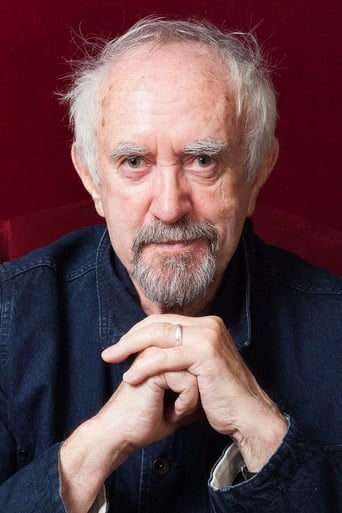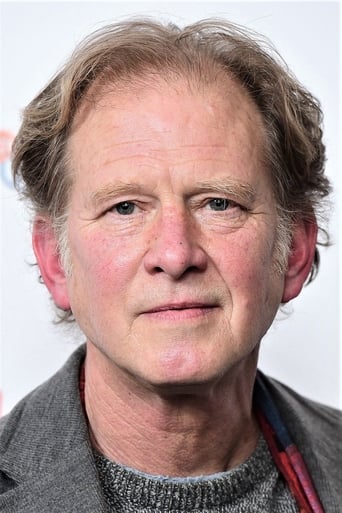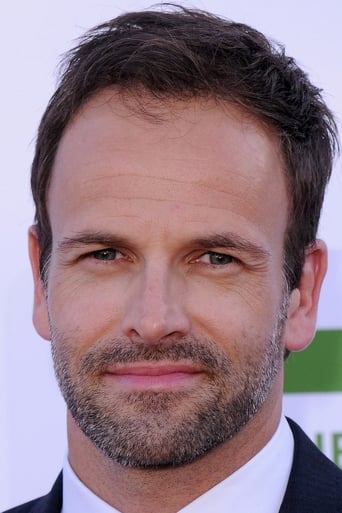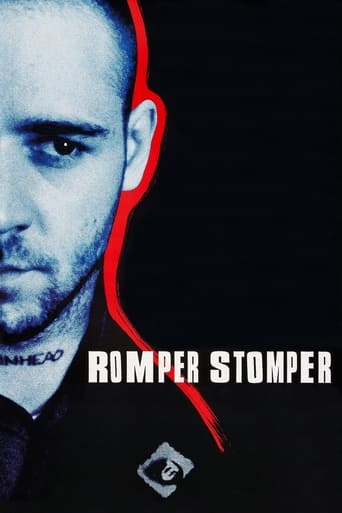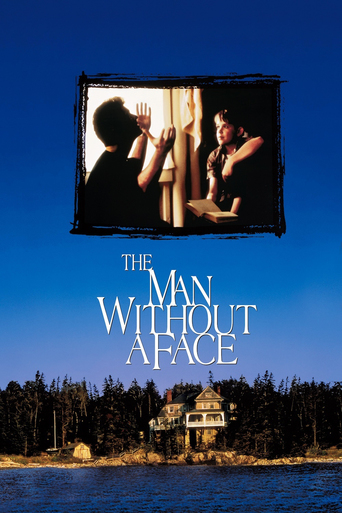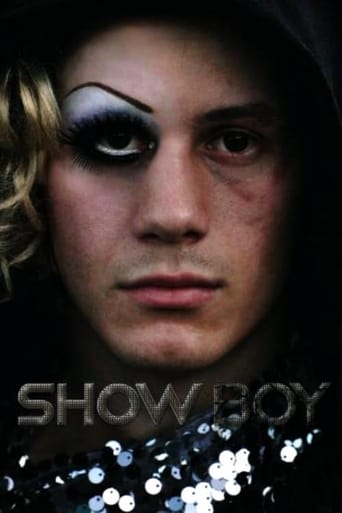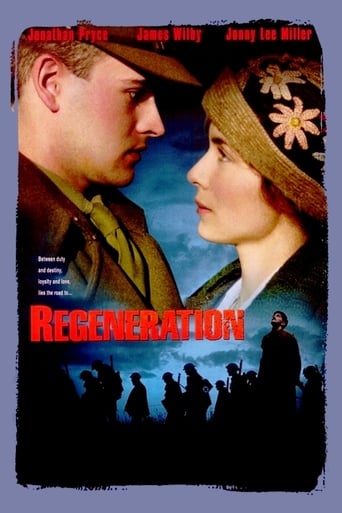
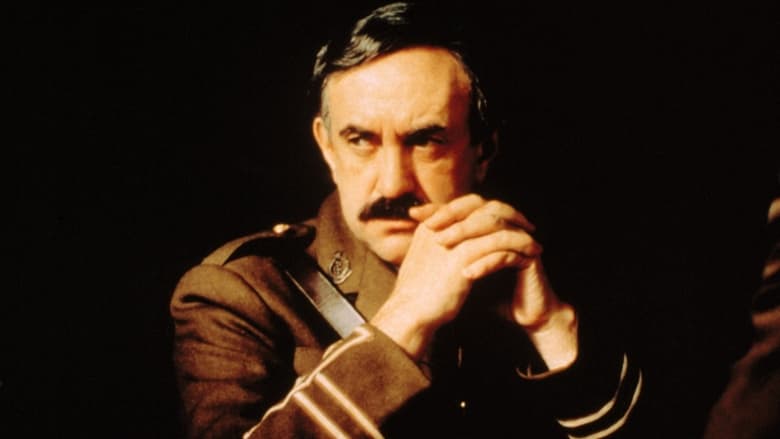
Regeneration (1998)
Wilfred Owen and Siegfried Sassoon, two of England's most important World War I poets are sent, along with other traumatized combatants, to a rest home in order to treat their emotional troubles, caused by the psychological fatigue that suffer the soldiers fighting in the no man's land.
Watch Trailer
Cast


Similar titles
Reviews
One of the very few war movies I'm still willing to watch. Unlike some earlier reviewers here I do not see any real link with 'Saving Private Ryan'. Spielberg (to me) is only really interested in making contemporary political parallels (I suspect re Israel) and of course his bottom line (he is notoriously parsimonious, and nothing wrong with that). Regeneration is a very good crack at an even better book in the Pat Barker series. That is its mission, a study of psychological damage done to young minds at war which is not usually reflected in the casualty figures. I know some of this from the recollections of my grandmother, of her father who survived the war, but for only a few years ''somewhat troubled''. I have his Military Medal here now. He was an 'Old Comtemptible' but not at all happy of having survived. I am not impressed by the artistic integrity of this fine film being so arrantly compromised in the 'Behind the lines' (US)version. Short changing buyers of this version and insulting their intelligences. Especially with such fine performances from all here, especially the incomparable Pryce and the only female reference in the film, the delightful Tanya Allen.
In 1998 I saw a great war film that was lost in the glare of the nearly simultaneous American film releases of Terrence Malick's remake of The Thin Red Line- which is a great film, and Steven Spielberg's cliché and stereotype-dripping Saving Private Ryan. It was a 1997 Canadian and British film called Regeneration, directed by Gillies MacKinnon (who directed The Playboys, and Small Faces), based upon the famed book of the same title by British novelist Pat Barker. The screenplay was written by Allan Scott. There were a couple of differences between it and the other films; the first being that it was set during World War One, in 1917, while the other two took place during World War Two. The second was that Regeneration may have been the best film of the trio. In the years since, I have searched for the film on DVD, but it only was available in a Region 2 DVD format. Then, I recently found it online, released by Artisan DVD, for American audiences. The DVD is as bare bones as one can get- not a single bonus feature. But, even worse is the fact that it was released under a different, and far less compelling and more trite, title of Behind The Lines. Worse yet is the fact that this film is a bowdlerized, dumbed down version of the great film I remember seeing.While I cannot pinpoint all the changes from the original film, the overall effect on me was not as great. Oh, it's still a good film, but the greatness has been lost due to the cutting out of some scenes entirely and the trimming of others- to get the nearly two hour original film down to 95 minutes, and re-editing the film into shorter scenes that are interspersed with each other, designed to appeal to a more MTV and video game mindset. Lost in the rush to appeal to typical American idiocy was most of a small romantic subplot, and extended scenes between two of the main characters, the War Poets Siegfried Sassoon (James Wilby) and Wilfred Owen (Stuart Bunce). One has to guess that if the film had too much poetry in it that the McDonald's fed masses would be turned off. Yet, the worst cut, for me, comes about two thirds into the film, where Dr. Rivers (Jonathan Pryce), head of the asylum- Craiglockhart War Hospital in Edinburgh, Scotland, where shell-shocked soldiers go for psychotherapy, goes to London, on R&R, to visit a colleague, Dr. Yealland (John Neville), who is using a very effective form of electroshock therapy to get soldiers suffering from mutism to speak again. All these years later it was that scene, above all others, which stood out in my memory. As a mute soldier is strapped down and about to be shocked for the first time, the camera cuts away from the soldier, and as his agonal screams ripple outward, one only sees the slightly winced reaction of the doctor. It's a brilliant cut and displays the director's command of his craft, for it's a) always better to imagine such horrors, and b) the doctor is the more important character. However, in the Americanized DVD version, all that is lost. We see a standard, even generic, editing job of pain, the doctor wincing, pain, the doctor hanging his head, etc. Thanks, my native land!The film still has, however bowdlerized, more contemporary relevance than the other two films which drowned it out in 1998, if only because- given the current U.S. treatment of both its Prisoners Of War and veterans of the Iraq War, it shows how little supposedly 'civilized nations' have come in almost a century of warfare. It also touches on smaller aspects of the war, like mail censorship, which are never shown in war films, much less even discussed in many for a regarding warfare. While The film lacks the high tech graphics of its bigger budgeted cousins from 1998, the words of some of the poems, and the reactions of the soldiers say far more than mere 'shocking' images can, for words that are well chose can never inure their readers. Images, even great ones, can do just that through sheer repetition. That said, the best images in the film are not elaborate war scenes, but those designed to show the aftereffects of war on the human body and mind. As example, there is a young soldier who is a quivering wreck, wont to running naked through the woods and mutilating himself, because, we learn, he was thrown by a shell explosion, into the air and when he regained consciousness he was lying face down in the rotted corpse of a German soldier. Hearing what caused him to become so disturbed is more effective than showing his face inside a bloodied, rotting mass of flesh, for, as in the cut scene of Dr. Rivers turning away from the sight of electroshock therapy, what is imagined is always worse than what can be portrayed, for each individual will fill in the horror with their own fears, rather than having a fixed image in their minds.The cinematography, by Glen MacPherson, is stunningly realistic yet beautiful- especially in the sepia-tinged, color leeched war sequences, but throughout the whole film, as well; and it works well with the simple and understated musical score. It is a stark reminder that, then and now, one need not have all the high tech big budget special effects wizardry of a Steven Spielberg film to leave far more haunting images- perhaps the most effective one left in this bowdlerized film is the opening of a pair of human eyes buried in mud, so that the whites burn with startling intensity up at the viewer. If only the American distributors had not so badly butchered this film, from the title on, the rest of the film would have retained the intensity of those eyes which held me through nearly a decade.
This film is not too bad. Although I did not enjoy most of the film too much, there were certain scenes which were definitely worth while. My favorite scenes were the war scenes, the scenes with Sassoon (especially the ones with poetry) and the last scene. As a result of this film, I must really urge you to read some of Sigfried Sassoons work and also some of Owen's. I read some in school and I found that some of their work is really fantastic. 6,5 out of 10
Excellent glimpse at the darker underbelly of war. The film takes the viewer down a grim back-alley of the war-movie genre that is seldom visited. A great movie to watch as a counter-balance to such films as Patton and The Big Red One. Tomorrow (11 November) is Veteran's Day; this film should be shown every year around this time.(And at the end of the film, when the Germans were seen surrendering, who WAS that young German soldier that they briefly focused on? Anyone? Bueller?)


